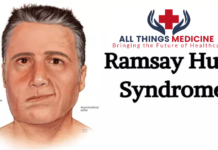Page Contents
Endometriosis is a condition that mostly affects women of reproductive age. It can take a toll on day-to-day life and mental well being. It is a condition where endometrium grows outside the uterus, mostly in the pelvis but can grow in other places as well such as in the abdomen.
It can produce symptoms like pain during periods, infertility, painful sexual intercourse etc. Currently, there is no cure for endometriosis but there are treatments available for managing the symptoms and improving the quality of life.
What is endometriosis?
Endometriosis is a gynecological condition in which endometrium, which is a tissue that makes up the lining of the uterus, grows on structures outside the uterus. This tissue can grow in any part of the body but most commonly grows in the pelvis.
It is benign but it responds to the menstrual hormones similar to the endometrium in the uterus. It thickens, sheds and then bleeds in every cycle. When it sheds, there is no way for blood to exit the body so it gets stuck and collects inside the body. This elicits inflammation, adhesions and scar formation.
Endometriosis most commonly affects:
- Ovaries
- Fallopian tubes
- Outer surface of uterus
- Ligaments that support the uterus
Rarely, endometriosis can occur in tissues outside the pelvis such as in the abdomen and chest.
Symptoms of endometriosis

Pain is the most common symptom of endometriosis but there are other symptoms as well. However some patients may not experience any symptoms at all. The symptoms of endometriosis can include:
- Pain during menstruation which can be in the abdomen, pelvis or lower back
- Pain before periods
- Pain during sexual intercourse
- Difficulty getting pregnant
- Heavy bleeding during periods
- Bleeding between periods
- Pain during passing stool
- Pain while urinating
- Constipation, diarrhea or nausea during periods
An important point to keep in mind is that while pain is the most common symptom of endometriosis, the severity of the pain does not depict the severity of the disease since some women do not experience any symptoms at all.
If a woman experiences severe pain it does not mean that her endometriosis is severe. Similarly, if a woman experiences mild to no pain then it does not mean that her endometriosis is not severe.
What are the stages of endometriosis?
What causes endometriosis?
The exact cause of endometriosis is unknown but there are a bunch of theories regarding this subject.
- Retrograde menstrual theory: Normally, the menstrual blood exits the body through the cervix and vagina. This theory suggests that the menstrual blood flows back into the pelvis through the fallopian tubes which can cause endometriosis.
- Lymphatic system: This theory suggests that endometrial cells are carried and spread through the lymphatic system.
- Weakened immune system: Here, a weakened immune system may not be capable of getting rid of endometrial cells that are outside the uterus.
- Hormones: This theory suggests that menstrual hormones such as estrogen transform and promote the growth of endometrial cells in other tissues of the body such as the peritoneum.
- Surgery: Some researchers also believe that endometrial tissue can be transferred to other places during a surgery or spread through a surgical scar, like a C-section scar. A
Diagnosis

You should seek medical advice from your doctor in case you are having any or all of the symptoms listed above. The doctor may carry out the following investigations:
- A pelvic exam to check if there is a mass.
- Ultrasound or MRI to look for endometrial tissue in the pelvis or the abdomen.
- Laparoscopy to confirm the diagnosis of endometriosis. It is a small incision surgical procedure which is used to look at structures inside the body.
- Sometimes, the surgeon may take a small sample of the tissue during laparoscopy for biopsy in order to confirm the diagnosis.
Endometriosis treatment
There are several treatment options available for endometriosis ranging from conservative medical treatment to surgery. The best treatment plan for you depends on various factors such as your age, symptoms, your plans of getting pregnant, which medications work for you or which medications have not worked for you, and whether or not you are fine with surgery.
Pain medication
Pain medication is used to ease pain. Paracetamol or NSAIDs such as ibuprofen may be prescribed. Sometimes they do not work for some people. In case they do not, consult your doctor so that you can get better treatment.
Hormone therapy
A doctor may prescribe hormonal therapy in the form of birth control pills, injections, patches or intrauterine devices. They prevent ovulation and by doing so, they stop the progression of endometrium and subsequent bleeding.
They can help with the pain but they have side effects so discuss everything with your doctor before starting the treatment. They also prevent you from getting pregnant so if you are trying to get pregnant, then you should choose a different plan.
Gonadotropin-releasing hormone (GnRH) agonists
GnRH agonists are given to stop the production of estrogen which induces ovulation. By stopping ovulation, a temporary state of ‘menopause’ in induced which helps relieve the symptoms. However, these too have side effects which should be discussed with the doctor.
Surgery
Surgery is an option if the conservative therapy is not working or if this is just what you decide to go ahead with. There are two options for surgery, laparoscopy or hysterectomy.
Laparoscopy is a small incision surgery during which displaced endometrial tissue is located and removed.
Hysterectomy is a surgery during which the uterus is removed. Sometimes it may be necessary to remove the ovaries as well. If your family is complete, then you can go ahead with this surgery but if you want to have kids, then this surgery will not be suitable for you.
Conclusion
Endometriosis is a condition in which endometrium (tissue that makes up the lining of the uterus) starts to grow in places other than the uterus. It most often occurs in the pelvis but can rarely occur in other places as well such as in the abdomen. Pain during menstruation is the most common symptom.
There is no cure for endometriosis yet. You can manage it and treat it with medical and surgical treatment options.
Recommended Articles













